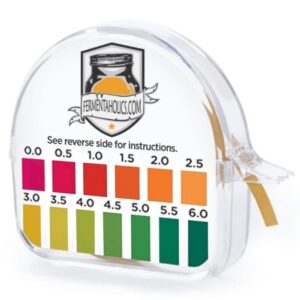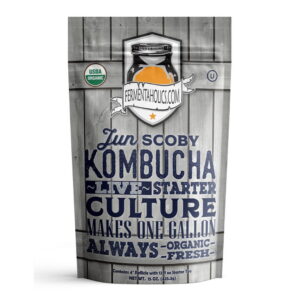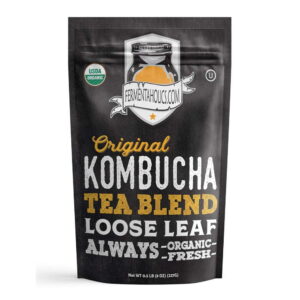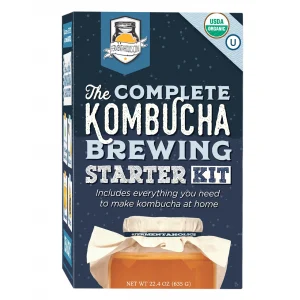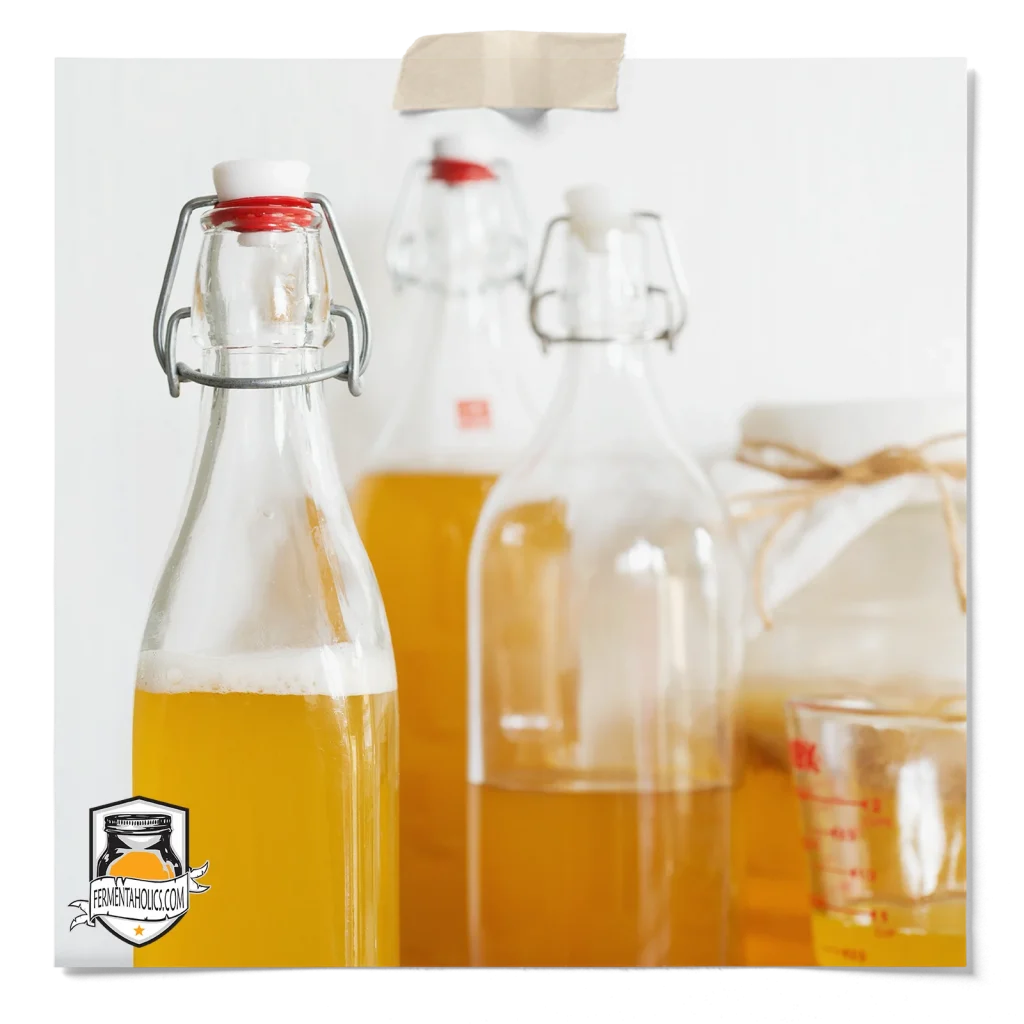
First off, congrats on making your batch of kombucha and getting into the world of kombucha making in the first place. It’s a big step, and we’re glad you’re here with us.
Now, let’s talk about the best practices for storing your kombucha culture (SCOBY pellicle and kombucha starter tea) between batches. This post will cover what to do after you’ve finished primary fermentation and you don’t want to immediately make a new batch.
When you finish a batch of kombucha, you’ll want to follow the standard kombucha-making ratios to determine how much starter tea to reserve (you can find the full breakdown here: Kombucha Making Ratio).
In short, at the end of primary fermentation, you’ll bottle and drink 90% of the kombucha liquid, and you’ll use the remaining 10% of the finished kombucha liquid along with whichever SCOBY pellicle(s) you’d like to keep as the starter for your next brew. When you are ready to brew again, you can just top off with sweet tea to get another batch going. But what do you do if you don’t want to brew right away?
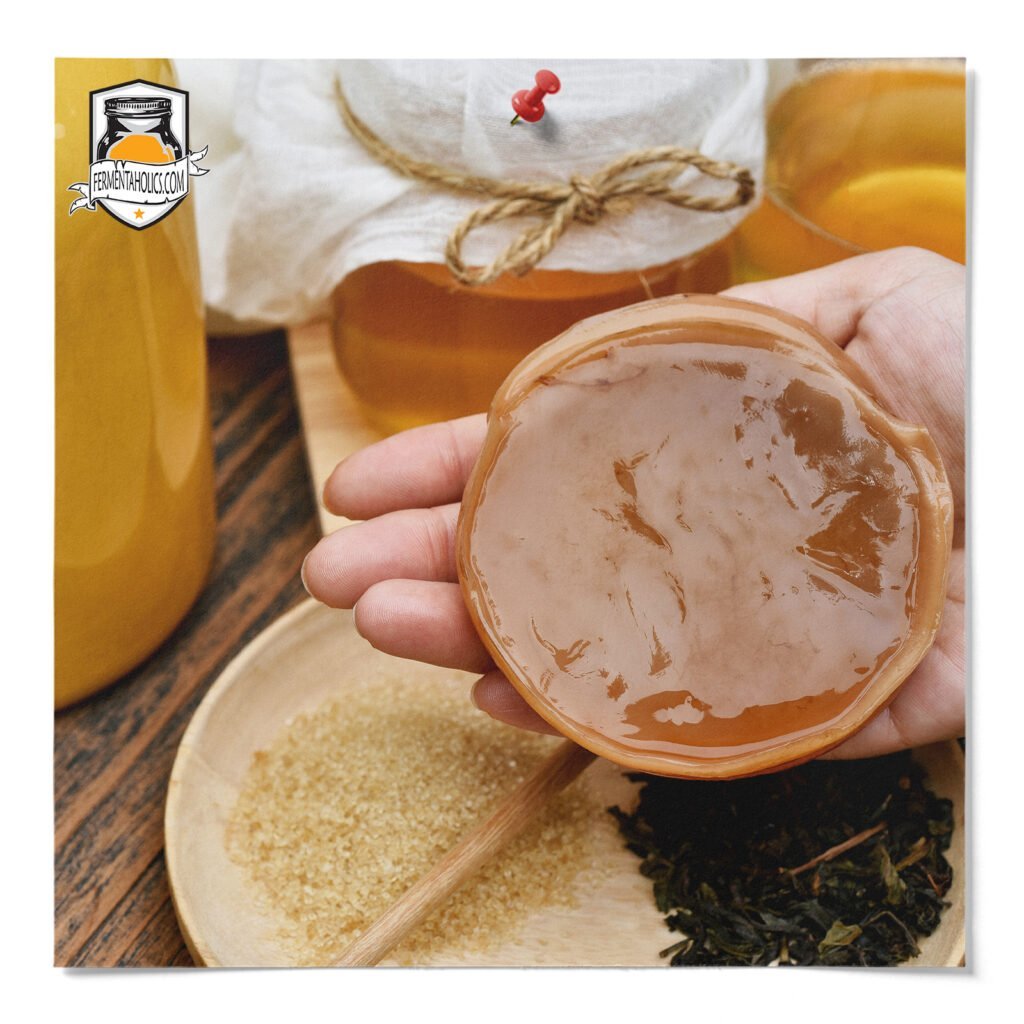
If you’re not ready to make a new batch right away, no problem. You will just want to take the starter you split off above and store it at room temperature, covered with a breathable cloth and secured with a rubber band, just like during the primary fermentation stage. Most brewers simply return the SCOBY and kombucha starter tea back to the original fermentation jar until they are ready to use.
As for lighting, just like primary fermentation, ambient light or darkness are both fine, just avoid direct sunlight. Also, make sure the SCOBY is covered with enough liquid starter tea to keep it fully submerged. A dry SCOBY sticking above the surface increases the chances of mold growing on it.
The amount of starter tea you need depends on how big your next batch will be. As a general rule, you’ll want to use 10% starter tea by volume. So when making a new batch, you will want to include:
So, if you know your next batch will be 1 gallon, plan to reserve at least 12 oz of starter tea along with your SCOBY.
No. Keep it at room temperature.
Refrigeration is not recommended because it slows/ceases microbial activity, which can throw off the balance in the culture. This can also lead to viability issues that can make it sluggish and less effective when used in future batches.
The SCOBY and starter tea are both acidic and shelf-stable at room temperature for extended periods. Just avoid extreme temperatures.
If you plan to brew again within a month or so, no further action is needed. The SCOBY can stay in the jar covered until your next batch. When you’re ready, just top it off with the sweet tea base to start a new batch following the recipe here: How to make kombucha.
If it’ll be longer than a month, it’s common practice to add a small amount of sweet tea every 4–8 weeks to renew fermentation to keep the microbes active. There’s no black-and-white rule here. Some brewers are aggressive and add sweetened tea every few weeks. Others will ignore this completely and let their SCOBY sit untouched for many months, even a year, and still use it successfully. But the best practice is to refresh it periodically to renew fermentation. When it comes to how much to add, we have a full post here that covers this in detail: How much sweet tea to add to feed your SCOBY?
From here, as long as proper pH is followed (more on this in a minute) and provided there is no mold forming on the surface (which appears blue, green, or fuzzy; not to be confused with normal brown stringy yeast), then it’s there for you to use as needed.
From a food safety standpoint, properly fermented kombucha starter tea will have followed established pH guidelines and will be acidic enough to prevent the growth of harmful bacteria if introduced. If this concept is new to you, be sure to check out our post that covers this in detail here: The Complete Guide to Kombucha and pH.
In essence, properly acidified kombucha is a mild vinegar. So, just as we store raw, unpasteurized vinegar at room temperature in a cabinet, kombucha starter tea can be stored the same way. There’s no need for refrigeration when your brew maintains a proper acidity level.
One thing to keep in mind: over time, some liquid will naturally evaporate from your kombucha jar, especially if it’s sitting for a few weeks or more. To account for this, you may want to store a little extra starter tea, just to be safe.
For example, if you don’t plan to brew again for another month, instead of storing just 12 oz, you might want to keep 16 oz on hand. This gives you a buffer in case of evaporation or if you decide to scale up your next batch.
Takeaways: Keep your SCOBY and starter liquid at room temperature, not in the fridge. If storing for longer, add sweet tea periodically to renew microbial activity. After adding sweet tea, take a quick pH reading to ensure it’s still under 4.2. Discard the batch if you see mold forming on the surface. It’s that easy, this ensures your culture stays healthy and ready for your next batch.
